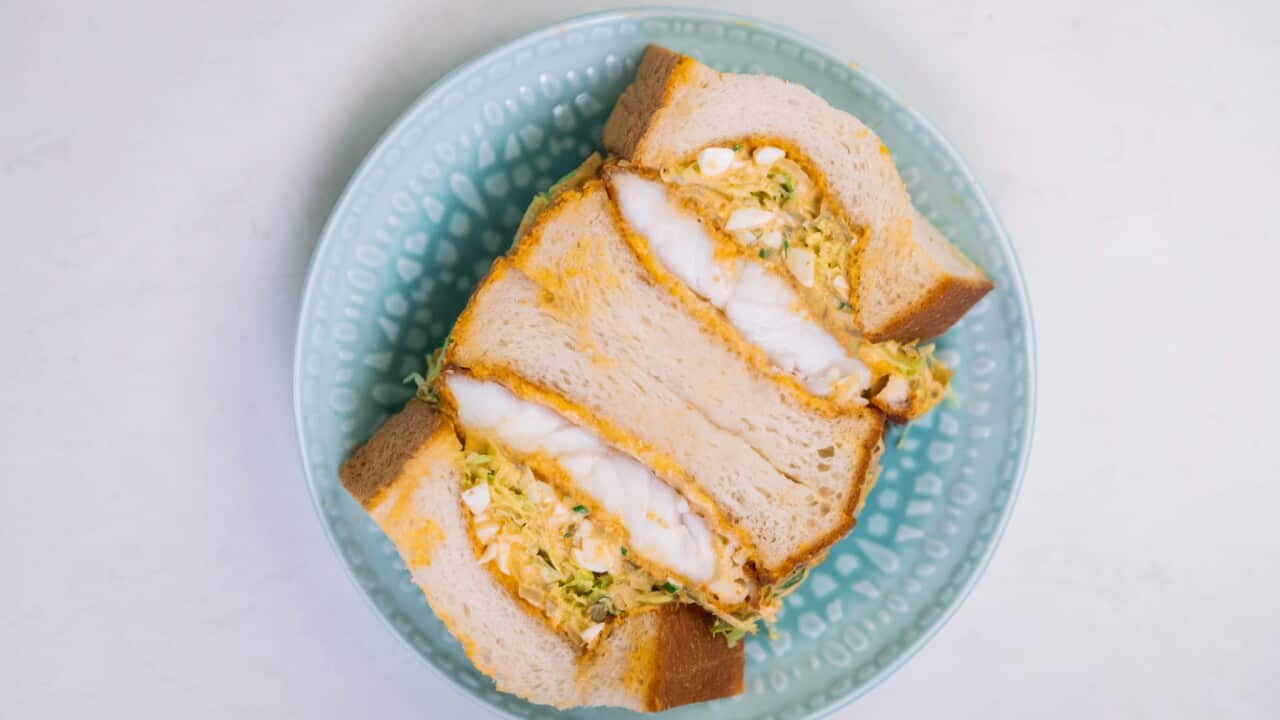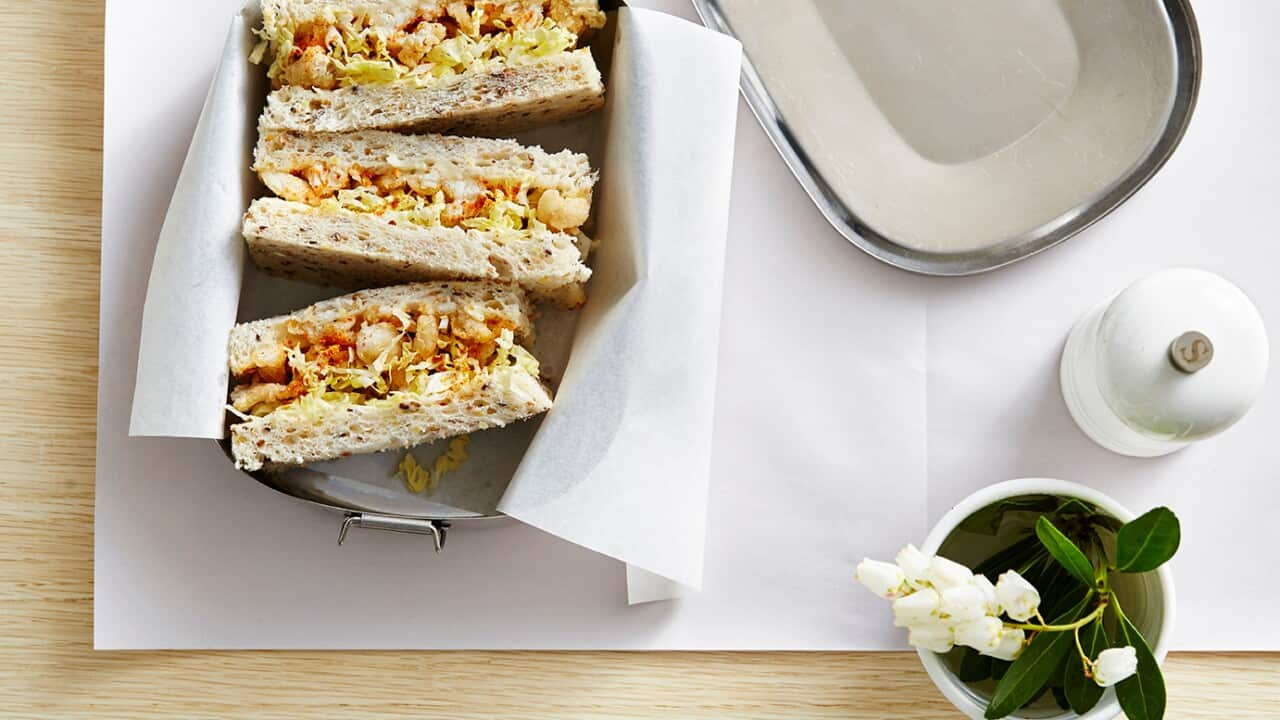When Japan was opened to the West in 1853, after over 200 years of isolation, the country saw a rapid influx of Western influences.
This was seen in the culinary world too, as the country increasingly welcomed the adaptation of Western dishes or yoshoku, as opposed to the traditional Japanese foods or washoku.
Tonkatsu, or crispy panko-crumbed pork cutlet, is a prime example, adapted from the French côtelette, which has then evolved, into other yoshoku favourites, such as katsu curry, katsu-don, and katsu sando.
The history of katsu sando goes back to the 1930s, and specifically to a tonkatsu shop called Isen in Ueno Tokyo, a district known as hanamachi, where geishas often lived and worked.
According to the , which is still present today, the idea of sandwiching katsu was born, when okami-san or the manager of the store was having breakfast one morning. Her typical breakfast included toast and tea, rather than rice and miso, which was still rare at the time.
She thought of putting katsu between bread for easy eating, just like sushi rolls.
The idea was then further refined to use smaller pieces of bread without the crust, to accommodate for the many geishas in the area, so that they could snack on the sandwich without messing up their lipstick.
Katsu, many ways
Katsu is a versatile dish which can be eaten in many ways, and is seen and loved all over Japan.
It can, however, differ slightly depending on the prefecture. Nagoya, for example, is known for its miso katsu - katsu topped with miso-based sauce, while Nigata prefecture is known for their tare-katsu - thin katsu dipped in a soy-based sauce.
As the term 'katsu' is a homophone for the verb katsu, meaning to "win", katsu is often eaten by students the night before their major exams or sporting events.
Since the 1930s, katsu sando has become not only a staple in Japanese convenience stores but also a popular cafe menu item around the world.
Katsu sando in Australia
Café Oratanek in Redfern released its katsu sando in 2015 and soon after, Sydney's Devon Cafe introduced its take in 2016. All of a sudden it seemed that there was a buzz around this fluffy sandwich stack.
“There simply wasn’t a place to eat katsu sando, my favourite dish,” Kenny Takayama, owner-chef of Café Oratanek tells SBS Food.
“And it wasn’t just katsu sando, Australians had little exposure to yoshoku back then, and I wanted to showcase that”. There are many variations of katsu sando in Australia today, from chicken to beef, vegetarian versions such as eggplant, and some with plenty of salad and original sauces in between.
There are many variations of katsu sando in Australia today, from chicken to beef, vegetarian versions such as eggplant, and some with plenty of salad and original sauces in between.

Kenny Takayama, owner-chef Café Oratanek (Yusuke Oba) Source: Yusuke Oba
But Takayama's sando is "simple, fresh, and not affected by trend".
"We have no freezer or microwave, because we cook to order, using the ingredients that arrive on that day."
Takayama says, he never expected katsu sando to become one of his signatures and put his cafe on the map.
"It's loved by everyone, regardless of age, gender or race. As a Japanese, I am proud that katsu sando has taken off. Japanese cuisine is not just sushi or tempura."
"We are not a katsu sando-dedicated cafe, so the order is limited per day." Owner and executive chef of Devon Cafe, Zachary Tan who introduced their sandos in 2016, says their wagyu katsu sando has been one of the biggest hits on their menu.
Owner and executive chef of Devon Cafe, Zachary Tan who introduced their sandos in 2016, says their wagyu katsu sando has been one of the biggest hits on their menu.

Katsu Sando, Cafe Oratnek (Yusuke Oba) Source: Yusuke Oba
It uses A5 wagyu, the highest grade of wagyu available, which is incredibly soft and juicy.
"It has become our staple. We cannot take it off the menu. It's part of our all-day menu".
Frankie Tan, co-owner of Saint Dreux in Melbourne says, they too "underestimated" katsu sando when the coffee and katsu sando bar was opened back in 2019.
Tan says they have "worked out a system" today, but initially, customers were queuing up for a significant amount of time, to receive their perfectly cut and lined sando in a slick black box.
"I know it's a little OCD, but with a design background, we wanted to keep the concept strong," Tan tells SBS Food.
Katsu sando at home
"Everybody can make katsu sando, but the key is the balance of good ingredients," says Frankie Tan.
At Saint Druex, it's all about the shokupan (soft Japanese milk bread), created by baker Satoshi Narusawa (Little Cardigan).
"In fact, we wanted to do something with his shokupan, and so came up the katsu sando" he shares.
"It may not be the fluffiest, but it has the right springiness."
Takayama says what makes a good katsu sando, is all in the katsu itself not being overcooked. "Fry slowly at a low temperature, then remove from oil when 90% cooked. And let the residual heat cook till about 98%."
In fact, Isen was known for their extremely soft katsu - their slogan was "katsu you can cut with chopsticks" -which allowed them to develop katsu sando that geisha can easily eat.
Takayama shares the importance of a tonkatsu sauce, not a barbecue variety. Tonkatsu sauce is a well-balanced sweet-savoury sauce that evolved from an English Worcestershire. You can buy it from Asian groceries or simply make your own by adding things like ketchup and sugar to a basic Worcestershire sauce.








